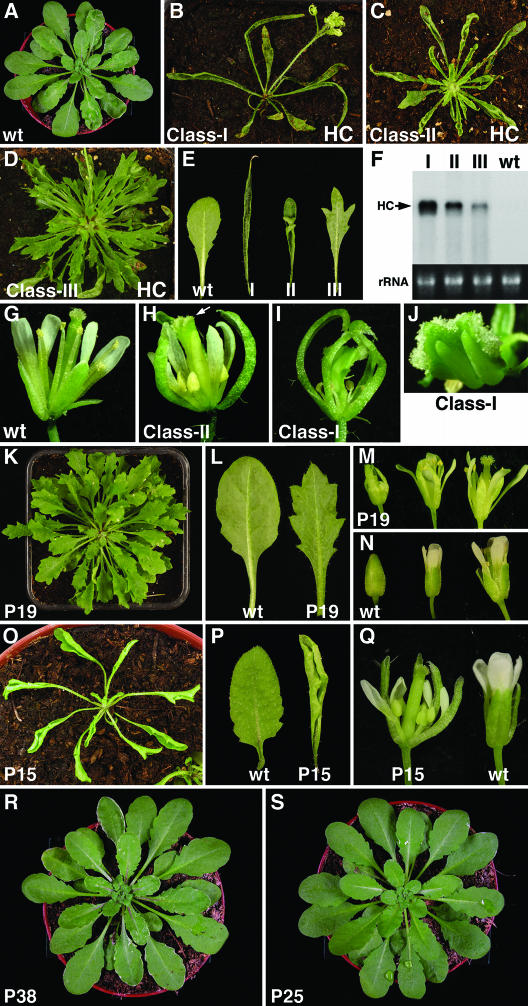Figure 1.
The P1-HcPro, P19, and P15 Proteins, but Not the P38 or P25 Proteins, Induce Developmental Defects in Arabidopsis.
(A) Wild-type Arabidopsis ecotype Col-0.
(B) to (D) P1-HcPro–transgenic Arabidopsis of class I (B), class II (C), and class III (D).
(E) Compared leaf morphology among the class I, II, and III P1-HcPro plants.
(F) Compared levels of P1-HcPro transcripts in flowers of class I, class II, and class III P1-HcPro plants, as assessed by RNA gel blot analysis. rRNA, ethidium bromide staining of rRNA.
(G) Flower from wild-type Arabidopsis ecotype Col-0. The sepals were opened to allow observation of the internal floral whorls.
(H) A flower from a P1-HcPro plant of class II. Note the loose flower structure, narrow sepals and petals, and partially unfused carpel (arrow).
(I) Flower from a P1-HcPro plant of class I. The petals were removed to allow observation of the carpel and narrow sepals.
(J) Close-up view of the unfused carpel in the flower depicted in (I).
(K) P19-transgenic Arabidopsis.
(L) Compared rosette leaf morphology in wild-type and P19 plants.
(M) and (N) Altered flower morphology in P19 plants (M) as compared with wild-type plants (N). Note the narrow sepals and petals and overall loose structure of the flower.
(O) P15-transgenic Arabidopsis.
(P) Compared rosette leaf morphology in wild-type and P15 plants.
(Q) Flower defects in P15-expressing plants, as compared with wild-type plants. Note the narrow sepals and petals and overall loose aspect of the flower.
(R) and (S) P38 transformants (R) and P25 transformants (S) do not exhibit a noticeable developmental phenotype.

